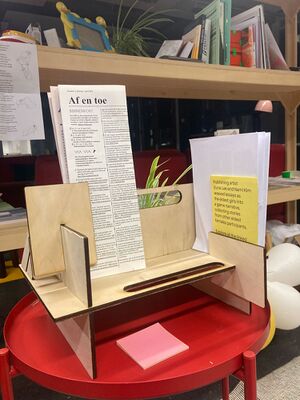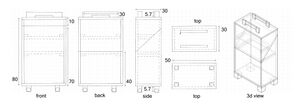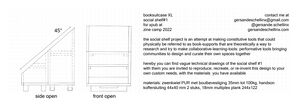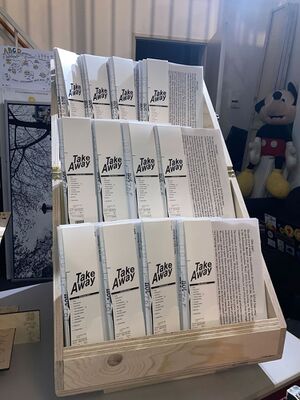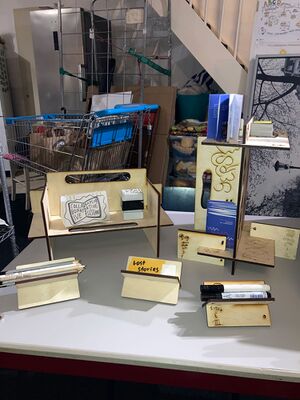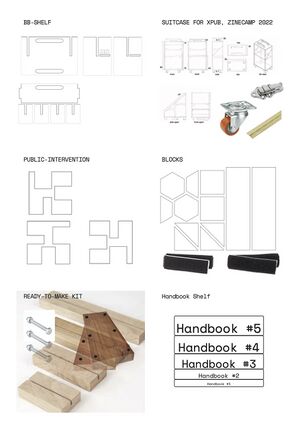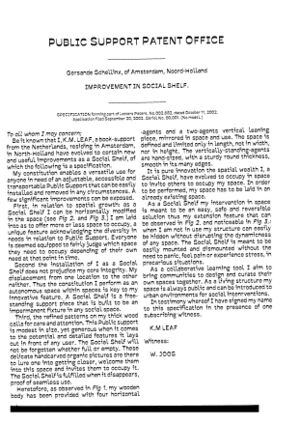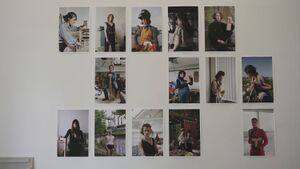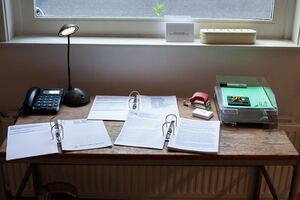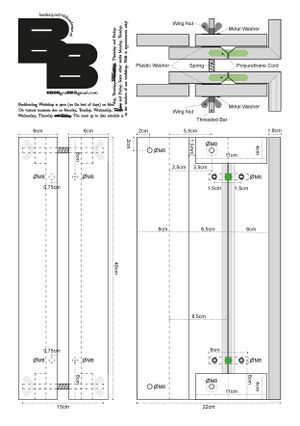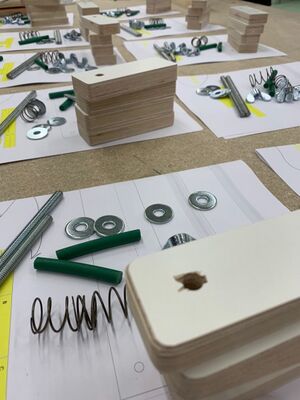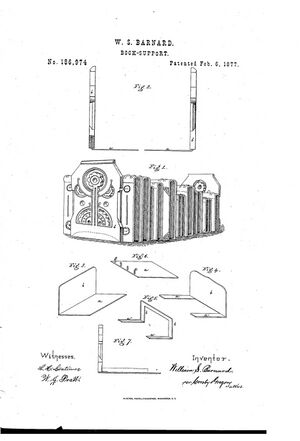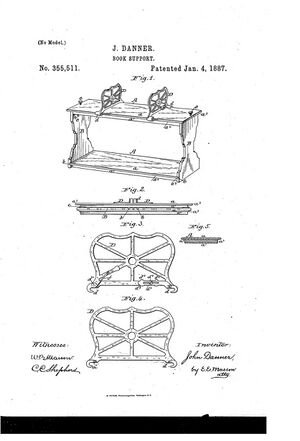Gersande Project Proposal
What do you want to make?
For this year I will focus on a project called the Social Shelf, consisting in constitutive tools that could physically be referred to as book-supports. These are theoretically a way to research, and also try to make collaborative-learning-tools: performative tools bringing communities to design and curate their own spaces together.
The Social Shelf fiction will be constructed through a series of satirical patents written from the point of view of the Social Shelves, as independent entities. Fiction is for me a great means to re-imagine social infrastructures and ways of working or being together, as it enables the makers and users to speculate on their immediate surroundings and material reality without experiencing its economical, political or physical restrictions, allowing us to aspire to different ways of living together safely.
I call those objects Social Shelf, and not Book Shelves, because they are not meant as spaces for books only, but also as a physical trope for social structures and community building. The conception of a Social Shelf requires different steps:
a. Design of the Social Shelf. What is it made of? How does it open? How does it look like?
b. Production of the Social Shelf. Where is it being made? How long does it take to make? What kind of equipment is needed? What kind of skills does it require?
c. Assembling the Social Shelf. How is it put together? When is it put together? Can it be taken apart again? Is it ready-made or assembled on the place of display? Does that require one or more person? [ see the BB_SocialShelf#2 ]
d. Curation of the Social Shelf. Where is it placed? How is it placed? Who places it? Why is it there?
e. Performance of the Social Shelf. The agency of the other on the shelf once it has been put somewhere in some way. How is it being used? Who is using it? Does the other have a say in that display? Does the interaction with the shelf changes that display? [ see the Zine Camp_SocialShelf#1 ]
Each of these steps is an aspect of the making of one shelf (or any “thing” for that matter). In the ideal case a group of people will invest in the making process step by step from beginning to end.
However, in this year’s context it appears to be more useful to fracture this process. I will take on most of the work load myself and facilitate the access for each feature to be explored in different situations with different communities. The user can then focus on one feature only, instead of getting an overwhelming load of responsabilities.
!Disclaimer! To some extent each of these shelves of course, fits all the features stated above, but each are meant to be brought to users, with a research-focus on one of those specific aspects.
Thus one shelf [a.] would be more focused on the design of the shelf in relation to the situation/location it is meant for. It would take the form of a maquette-sized Social Shelf, for others to try different ways to combine a common set of shapes that build up to a custom space. This process would enable them to understand the body of the shelf better by themselves, and the different possibilities laid out in front of them.
To explore more the production feature [b.], an “assembling”-kit shelf would be made with raw materials and tools, accompanied by an instruction manual with suggestions of what can be produced, and instructions on how to use the tools provided.
In the assembling part [c.] a shelf will be prototyped. A laser cut shelf, meant for students to carry their dummies and books easily in and out of the book binding workshop, a space dedicated for bookbinding and overall publishing/publications on different levels in the Gerrit Rietveld Academie where I work on a weekly basis . The shelf consists of eight body parts that fit three A3s. One can customise it manually or digitally before cutting and then assemble it in different ways depending of one’s needs.
For the curation feature of the shelf [d.], a “public intervention” shelf would be made available that fits different architectural-relief/designs in the city, in order to create temporary spaces for events as for example a book-swap. I will contact anarchist groups in Amsterdam that do actions that emerge within feelings of need/urgency and that constantly work with precarious infrastructures to occupy spaces that are not meant for such actions.
Finally for the performance feature [e.], the Zine Camp shelf was a good example of that usage.The XPUB members were left to make use of the space of this shelf at the Zine camp, in relation to a public space that the maker had no control over.
How do you plan to make it?
In order to make this happen I aim, in the first trimester, to research book-supports as objects and investigate their potential as constitutive tools.
After that I will design and produce five Social Shelf prototypes (with different features, materials, accessibility) and create the Social Shelf fiction with a series of satirical patents narrated from the point of view of each of those Social Shelves in order to describe the shelves in relation to their social reality.
At the end of this process, I’d like to isolate a few Social Shelves and introduce them to the public with a series of social interventions and workshops. After these public occurrences, I wish to write a technical note, as a critical take on how the Shelves were used/made/performed, after which their designs might be changed on paper, accompanied by additional information.
Finally, I’d like to gather all the information I have on the Social Shelf, what I have learned from that process, which is in fact the work, what can be changed or should remain and make a handbook with that information and documentation to encourage others to learn from and further that research.
What is your timetable?
September
- Research what is a book-support
- Research book-supports made in materials and potential techniques.
- Take notes and make sketches of different book-supports to be made for different contexts.
October
- Write patent for the Original Social Shelf.
- Present the Social Shelf project at the Leeszaal.
- Make first Social Shelf Prototype for Zine Camp. Start documenting process, review process, take notes of the interaction with Other when the shelf is being performed.
November/December
- Write patent for first Social Shelf Prototype and update the design after material observations made. Make technical sheet for the Zine Camp Social Shelf.
- Continue patents and documentation of Social Shelves.
- Create second Social Shelf Prototype for the BB Workshop.
- Continue design and maquette for other potential Social Shelves.
January
- Try to bring BB Shelf to the Other, documents first encounter with other.
- Gather research and documentation first trimester to make a first handbook proposal (with designs, patents, technical sheets with reviews for the two existing social shelves).
- Make third Social Shelf proposal, bring it to the other with public appearance.
February/March
- Bring third social shelf to public appearance.
- Create fourth Social Shelf Prototype.
- Update handbook proposal with third and fourth Social Shelf proposal. Update handbook with latest observations. Maybe re-visit previous prototypes with latest updates and observations.
April/May
- Make fifth and final Social Shelf proposal, bring it to public appearance.
- Last update handbook proposal with all documentation.
- Assess if last public appearance needed with updates made on Social Shelves, or bring handbook to different public.
June
- Make final changes handbook, gather material research.
- Prepare, curate graduation presentation.
Why do you want to make it?
The Social Shelf is a space to convene for non-linear education in which I am not at the centre of the class as initiator, but the materiality is. The Social Shelf project is an attempt at making use of a non-human perspective (that of the material, of the tool) in order to let people reclaim space and agency: to take the authority out of the hierarchy and put it into site-specific community.
Through the material research and relationships made with human-structures and material-structures, I want to explore and investigate with others, ways of working together with more empathy, in circular circuits rather than linear ones. The workshop format, the craft methodologies/requirements and co-working/co-thinking environment, is a fertile ground for research around alternative or fluctuating publishing ways of being: I believe those methods are key to re-inventing social infrastructures in which one can step away from individual isolation and helplessness to step into collective learning and shaping in relation to each and everyone’s own direct surroundings.
Who can help you and how?
I’d like to stay grounded in this research by taking direct inspiration and embrace continuity in my experience as a bookbinder-workshop manager. My colleagues, Miquel Hervás Goméz and Ott Metusala have always been of great support and inspiration in my pedagogical interests and material research, themselves being very implicated in creating easy to build tools through the BB (Bookbinding Workshop) channel and supporting community-publishing-projects in all forms. Altogether we have been exploring channels at the crossings between tools/community/pedagogy/empowerment/publication.
Joseph has given me a lot of input in relation to patents, open-source designs and related texts and works. Last year, I sensed at different occasions that Manetta had a lot to share with me on the subject of social performative platforms of work, being investigation or practice. The references given to me last year were very exciting to discover. In general, I have a hard time knowing specifically who can help me yet, I like to get inputs from very diverse entry-points and unexpected ones. The experience with the other and public moments are important input situations.
Relation to previous practice
The work I have done the past years is a crossover between curating and facilitating other’s works within my professional practice (workshop technician/educator, bookbinder, editor…) and my personal practice, that is always nested within collaborative publishing platforms. The investigation and prototyping of publications as a context within which the “public” has full agency, evolves and extends the publication, has been a main interest in my work, each publishing stage seen as a moment of craft. The “publication” stage included seen an ongoing process where one leaves the agency to a new set of people. The design of the box in Special Issue 17 last year with Jian Haake is a good simple example of this intention materially: we designed the publication in a “universal” way, but introduced a feature on the inside that would make the box personal through its interaction with the public.
The past year I’ve been very interested in developing my writing practice, trying to more thoroughly trace and record the steps taken together, methods to enable those steps and my role as a facilitator. This “background” work has become an exercise and a work itself, becoming a way to publish in a self-reflective way, offering transparency to the social structures underlaying each project.
The exhibitions in which I have taken part the past year with the XPUB, the Headquarters at puntWG led by Olga Micińska or with the Office for Small Decision Making at Plan B have been very inspiring and led me to this project with arms wide open.
The series of tool workshop we have been doing for a couple of years now with the Bookbinding Workshop at the Rietveld is one of my biggest reference in the pedagogical and social matter of this platform.
Relation to a larger context
Recently I have been introduced to Enzo Mari’s work and have found a lot of inspiration in the open source designs he made and published Autoprogettazione?. Looking into his work I encounter a great desire to motivate people to think with their hands, the material reality of the infrastructures one has around them. Seeing the material process as valuable mainly through educational points rather than aesthetic once.

Johanna Drucker’s performative materiality exposed in DHQ: Digital Humanities Quarterly Vol.7 is something that resonates immensely with working intentions and the aspiration to work on ongoing processes rather than what one could call fixed outcome. This performative materiality is a key concept in my research, I do not want to be at the centre of my research, I am the instrument of the research.
The concept of communities of practice is something I am interested to further investigate in terms of organisations, in order to investigate models that can innovate and solve problems as mentioned by Etienne and Beverly Wenger-Trayner in Introduction to communities of practice, a brief overview of the concept and its uses.
Italo Calvino’s If on a Winter's Night a Traveller, is to me a very beautiful demonstration of fictional displacement pulling the reader as protagonist in an embedded narrative that never fails to remind you of its material and social “reality”. A narrative tool I’d like to explore myself to make very concrete material and methodological proposals.
References/bibliography
Recently I have come across book-support patents from the 19th century which I found very inspiring in the sort of romantic yet excessively administrative rhetoric they contain. This motivated me to write satirical patents, in an ambiguous fashion.
I have found a lot of inspiration in publications around the matter of publishing or of fiction as a way to transcend social dead-ends. Some of my latest readings:
Annotated Bibliography
Patent
(i) Barnard, W.S (1877) Improvement in Booksupport, United States Patent Office
(ii) Danner, J (1887) Book-Support, United States Patent Office
note: The two patents above were a great insight in the language used to describe the Book-support objects and the variations in body and mechanism one can encounter. I aim to use them as reference to make the description of the Social Shelves.
Books
(i) Cras, Sophie (sous la direction de) (2022) Ecrits d'Artistes sur l'Économie, Éditions B42
note: A diverse collection of texts with artists' take on economics. Some texts were spot on in regards to the ambiguity of leisure and labour, trying to propose a critical view on the subject, re-imagine new economical predicate for people to live together. Offering new social infrastructures, ways to scheme against capitalist markets or offer to engage in new living/working perspectives. Some are more utopian than other, some quite practical other harsh.
(ii) Barette, Lucie (2022) Corset de Papier, éditions divergences
note: Critical take on feminine press in France, with a sharp historical and social discourse on the context of its emergence. Leading to an analysis of the consequences nowadays on the collective minds, an influence with quite some political weight. Good essay, on a specific topic, on the body/content relation within social and political context of publishing. What once was a rebellious initiative and a way to go around censorship, can nowadays be a way to reproduce social stigma and keep one in a position of oppression.
(iii) Gilbert, Annette (2016) Publishing as Artistic Practice, Sternberg Press
note: A lot of different works, concepts in relation to Publishing in the art field brought at the forefront of social and academic concerns. One of the first publications gathering as many texts on Publishing on a theoretical level.v
(iv) Flusser, Vilém (2002) Petite Philosophie du design [Essai], Éditions Circé
note: This collection of essays is bizarre and poetic, cynic yet dreamy. Flusser's take on design can sometimes feel very relatable, but can also be cruel, if not ridiculous and distant with no compromise. The introduction text compares 'designers' to some sort of con-artists or magicians. Forcing shape onto what hasn't one, trying to reach the stars one brick at the time.
(v) Calvino, Italo (1983) If on a Winter's Night a Traveller, Vintage Classics
note: Exciting multi-layered narration, mixing genres, human and non-human perspectives. Complex yet accessible structure with short chapters keeping the reader on its toes. A book within a book within a book, holding a book held by an author narrated by another author holding another book…
(vi) De Munck, Marlies & Gielen, Pascal (2022) Kwetsbaarheid, Valiz
note: On fragility by Marlies de Munck and Pascal Gielen, has a nice take on touch and be touched, or not touched, as a space that can be one of safety as much as one loneliness, isolation. A good base to think about discomfort, disruption as sometimes necessary to emancipate from fragility, or embrace it, be confident to go ahead. Made a connection to education and learning/teaching processes.
(vii) Klement, Elisabeth & Pappa, Laura (2017) Signals from the Periphery, Estonian Academy of Arts Press
note: Collection of contributions about alternative ways to apply graphic design in practice, education, life. Beyond traditional formats and infrastructures. Introduces a one of a kind engineer/cartoonist/writer practitioner from the states, a school in France that refused to conform to the current model and created its own ideal school of indolence were printing and publishing was a daily practice, as well as a self-organised evening school in London that emerged out of urgency and is constantly trying to re-evaluate its needs to survive. Amongst others.
(viii) Mari, Enzo (1974) autoprogettazione?, Edizioni Corraini
note: Great collection of furniture designs made possible with the simplest tool and material set. Accompanied with interviews, notes, discussions and reflections from “users” and the designer self. Very relatable intention from Enzo Mari in the pedagogical value “the end product, although usable, is only important because of its educational value”. A plea for thinking with one’s own hands and anti-consumerism.
(ix) Cramer, Florian & Wesseling, Janneke (2022) Making Matters, A Vocabulary for Collective Arts, Valiz
note: Different takes on collectivity across a diverse body of disciplines with non-western perspectives. Short chapters introducing different ways to being together in art and design, different ways to document or share being together in art and design. Still reading this publication, some chapter talk to me more than others, hard to reflect on it already.
(x) Almqvist, Erik Eje (2022) Hammer & Nail, Pavilion
note: Furniture designs inspired by Enzo Mari. Brief introduction to Enzo Mari and the author’s personal motivations. Then a chapter in which is explained and listed which items one should collect to be able to make what is in the book, as well as how to practice with these tools in order to be able to reproduce safely the designs yourself. Very clear, blueprints and small description of steps and concepts.
(xi) Aalders, Willem (1981) houten speelgoed, voor binnen en buiten zelf maken, Zuidgroep Bv Uitgevers
note: Leeszaal found. Book includes specification of needed tools. Quite accessible set of tools for anyone to collect and be able to make home. I was very inspired by the very straightforward yet elegant design blueprints that are accessible to many to reproduce all the items in the book.
(xii) Goalec, Valérian, (2020) From His Desk, Théophie’s Calot, MER. Paper Kunsthalle, LaSpore
note: Artist book gathering a series of stencils and measuring tools made based on 26 different desks. I like this making of relatable traditional tools on the base of custom values corresponding to one specific environment, illustrating one’s space specific needs.
Articles
(i) Drucker, J (2013) 'Performative Materiality and Theoretical Approaches to Interface' in DHQ: Digital Humanities Quarterly Vol.7, No.1
note: “Performative materiality suggests that what something is has to be understood in terms of what it does, how it works within machinic, systemic, and cultural domains.” I’m very interested in the concept of performative materiality dissected in this text by Johanna Drucker. To look upon an interface “that is meant to expose and support the activity of interpretation, rather than to display finished forms”.
(ii) Wenger-Trayner, Etienne and Beverly (2015) Introduction to communities of practice, a brief overview of the concept and its uses
note: As I’d like to address communities, in a broad sense, this introduction to communities of practice gave me a great insight on what different aspects of said structure I should take into account and which kind of community I’d live to address or convene, especially in terms of organisation: “Communities of practice provide a new approach, which focused on people and on the social structure that enable them to learn with and from each other.”



